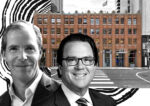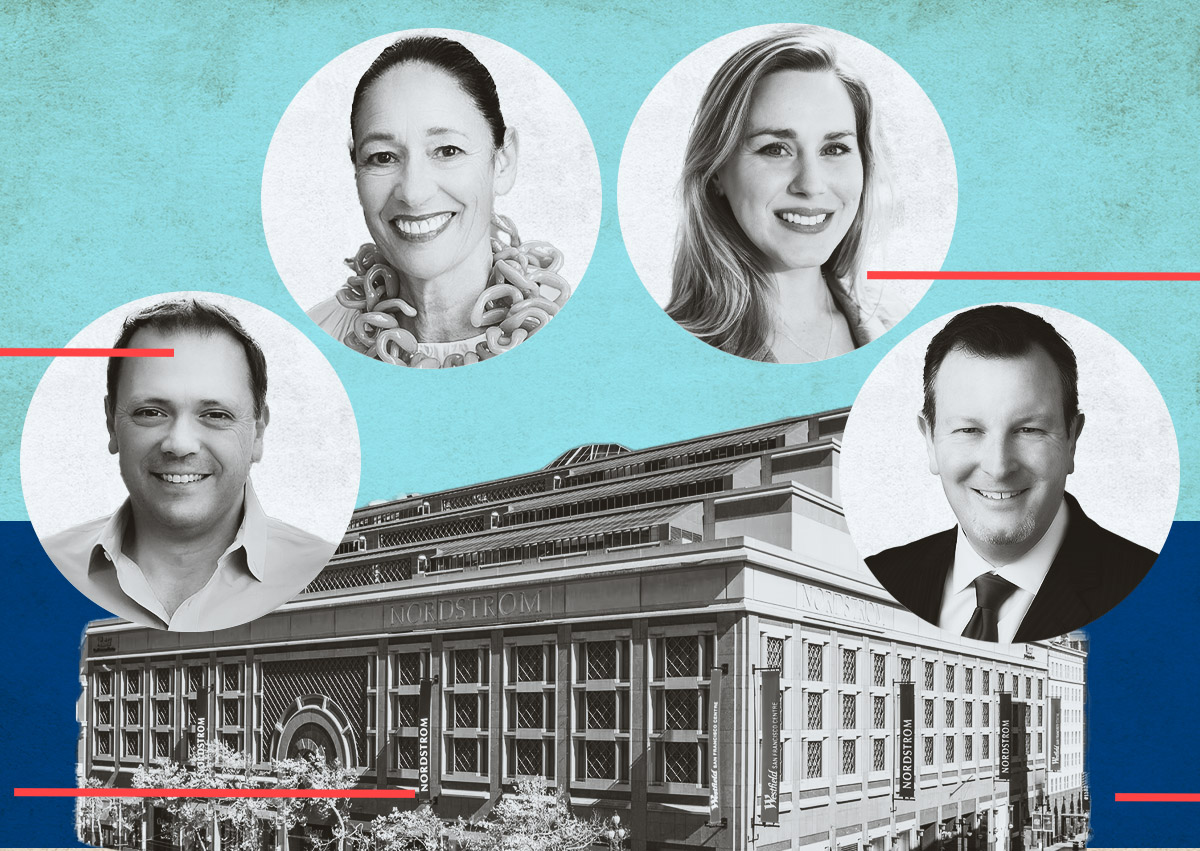Hospitality groups, retailers, restaurateurs, office owners and civic leaders will have to work together to get San Francisco on a recovery by the end of the decade, according to industry experts.
“We can’t be in silos and hope the recovery is going to benefit all of us,” said Julie Purnell, senior vice president at Flynn Properties, which is in the midst of an $80-million remodel of the Huntington Hotel on Nob Hill. “We really have to work together and work with people that maybe you haven’t worked with before.”
Purnell, along with panelists from Marriott, Hyatt, IHG and other companies spoke at the Bisnow Bay Area Hospitality, Retail and Restaurants Conference in San Francisco this week and said they expect at least a five-year horizon on the city’s recovery, given that convention and business travel is still down significantly.
David Kuperberg, Hyatt’s head of development for its Dream Hotels, said the real estate industry would need to pull together to create real change in the city’s beleaguered tourist centers.
“The road to recovery is through leisure [travel] and I’m a firm believer that starts with Union Square,” he said, adding that 50 percent of all the city’s guests stay in the downtown neighborhood. “It’s the first thing they see and it’s what they talk about.”
Purnell issued a get-out-the-vote plug for the massive November election and said a hospitality recovery would take “a partnership of every constituent.”
“The office market needs to come back. The housing market needs to come back,” she said.
From her company’s office in the Financial District, she said she’s had a front-row seat to gauge the recovery efforts and said that the changes have been encouraging.
“It’s getting better. It’s not getting worse and it’s not staying static,” she said.
Retail risks
How the city’s still-struggling central business district is faring versus its more lively outlying neighborhood commercial strips was a big topic of discussion for the conference’s retail and restaurant panelists. In fact, the conference was held in Japantown at the Hyatt-owned Hotel Kabuki for the first time ever, though organizers said that’s because the event space at the venue was a better fit for the 150-person crowd, not because of any preference for holding the event outside downtown.
The upbeat narrative around the neighborhoods has driven up retail rents there, while sales are not keeping up with rising costs and wages, panelists said, pointing out that streets like Chestnut, Fillmore and Union were doing better than downtown but were also still behind 2019 levels because tourist traffic to those strips has not resumed in earnest.
That’s creating a scenario where only inexpensive fast-casual restaurants and very special, very expensive restaurants can survive in the city, said Adriano Paganini, founder and CEO of Back of the House restaurant group. It owns 22 restaurants in the Bay Area, including several outposts of fast-casual Super Duper Burgers as well as full-service neighborhood favorites such as Starbelly in the Castro, a Mano in Hayes Valley and Beretta in NoPa and the Mission.
“It’s amazing how many people you need to run even a mid-sized full-service restaurant. In one of our restaurants we have over 100 people working,” he said. “You have to do a lot of volume to pay for all that.”
Insurance came up as one of the issues standing in the way of getting retail and restaurant leases signed, given that the prices have gone up tremendously even as exclusions from coverage are also on the rise. Policies for umbrella coverage, which used to be an afterthought, have gotten so expensive it’s now a sticking point between landlords and tenants. Some tenants in older, unsprinklered buildings can’t find coverage from traditional carriers at all, and need to go to the even more expensive surplus lines marketplace, panelists said.
Getting insurance companies to pay out claims is also an issue, according to Michael Van Every, CEO of Republic Urban Properties. He said he’s still waiting on about $3 million in claims from water damage at one of his Bay Area buildings after a 2019 atmospheric river.
“It’s absolute warfare in the adjustment game,” he said. “You better have your adjustment team on board and a damn good lawyer because you’re going to go the distance.”
Skyrocketing tenant improvement budgets were also a subject of discussion, with the high premiums and unavailability of qualified workers given as the main reason construction costs have not come down even though pandemic-era supply chain issues have largely been resolved.
Conversions and collaboration
Given the expense of building from the ground up, major hotel chains have been leaning into conversions, panelists said.
“Getting anything out of the ground has been pretty challenging to put it mildly,” said Catie Cramer, vice president for IHG. The company is currently finishing up a conversion of a former Lowe’s in Santa Monica to its first Regent-branded hotel in the U.S., she said, adding that San Francisco has a “ton of opportunity” for conversions of independent hotels that “need a little bit of a boost” post-COVID.
Leigh Chang, principal at Group I, revealed that her company’s Soho House-affiliated Line Hotel in is currently undergoing a conversion to a Curio Collection Hilton.
“We’re at a point where we need a wider distribution system,” she said, adding that the conversion, including a tech upgrade, should be complete by the end of the year.
Returning to the collaborative theme of the day, Chang said the company, which also owns the nearby Warfield Theatre, has worked with other local property owners, including Ikea across the street, to try to convince the city to reopen Market Street to cars. The ban on private cars went into effect in January 2020, shortly before the pandemic emptied out downtown.
“The lack of cars really has honestly killed the businesses on Market Street for a lot of small mom-and-pops and the theater business,” she said, adding that right now her stretch of mid-Market is probably “the last place” someone would open a retail business or restaurant.
The company is bringing in pop-up performers and rotating art projects from local nonprofits to invigorate its empty storefronts until it can entice full-time tenants to take the leap.
“We’re just trying to do any sort of thing to draw a crowd and really try to bring vibrancy to the overall neighborhood, not just our property,” she said. “If everybody gains, then we gain as well.”
Read more







